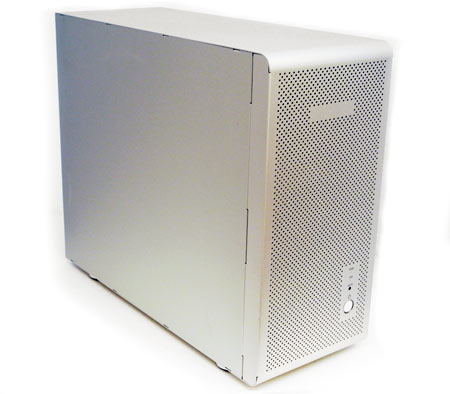External Graphics Over PCIe 3.0? Netstor's NA255A, Reviewed
Netstor sent over its TurboBox NA255A, an external enclosure capable of accommodating four dual-slot graphics cards across one 16-lane PCI Express 3.0 connection. Is this thing fast enough for general-purpose GPU compute workloads? How about gaming?
Our Benchmarks Prove Its Efficacy, But At What Cost?
Real data speaks volumes. Before we have it, though, proper conclusions are impossible to formulate, even when the math suggests we're on the right track. Personally, Netstor's TurboBox NA255A turned into an example of that confounding predicament. Before I even started testing, I knew the device's single 16-lane PCI Express 3.0 interface should have given me a wide-enough pipe for multiple GPUs working in parallel without imposing a bottleneck.
But I just had to test a card in a PCI Express slot limited to four lanes of second-gen PCIe in order to validate the TurboBox's results. And the numbers speak for themselves, confirming that this unit successfully externalizes graphics cards for GPU-accelerated compute tasks (or games, though this thing is in no way economical for such a usage model). Using three Radeon HD 7970s, we weren't able to perceive any slow-down compared to cards dropped right onto an X79-based motherboard. Additional testing suggests a fourth card wouldn't have fared any worse, at least in bitcoin mining.
Now, how about this product's value? Netstor is asking about $2,200 for its NA255A. So, right off the bat, ouch. You could build a killer workstation including three Radeon HD 7970s for that much money. Granted, you'd still need to find the right case, the right power supply, a compatible motherboard, and then cool it all. But we're Tom's Hardware; that's what we do. For that reason, we find it hard to imagine where the TurboBox makes sense for a PC builder.
But what about someone working on a Mac Pro? Apple's more limited ecosystem means there is no such thing as a three- or four-way graphics array. This could be one of the only options for enabling multiple GPUs. If massive compute potential is important, you might need to swallow hard and consider Netstor's solution the cost of doing business in Apple's world.
Get Tom's Hardware's best news and in-depth reviews, straight to your inbox.
Current page: Our Benchmarks Prove Its Efficacy, But At What Cost?
Prev Page Power And HeatDon Woligroski was a former senior hardware editor for Tom's Hardware. He has covered a wide range of PC hardware topics, including CPUs, GPUs, system building, and emerging technologies.
-
dagamer34 Now if only we could get external GPUs via Thunderbolt (or it's future iterations) so that laptops wouldn't be forever gimped, we'd be in business!Reply -
Whooo whoo, if i had the money to burn, i would get this NA255A, remove the PSU bundle, replace it with a Seasonic 1000 Platinum, slap four GTX Titans, add a custom water-cooling loop, connect it to my main PC and have (if it works) three more NA255A's for each of the PCIe for the main PC with a grand total of 16 GTX Titans for massive GPU computation. All for a grand total of $13,800. Massive electric bill, here i come!Reply
-
mayankleoboy1 PCIE signals scale poorly to long wires. So it is a technical achievement to have these signals travel over a meter of wire.Reply -
A Bad Day dagamer34Now if only we could get external GPUs via Thunderbolt (or it's future iterations) so that laptops wouldn't be forever gimped, we'd be in business!Reply
There are some external GPU cases.
The only issue is that the cheapest is somewhere slightly less than $400.
Please explain to me how an aluminum box, a micro-PSU, and a Thunderbolt-to-PCIE adapter adds up to even $200... -
A Bad Day EDIT: And when I meant the cheapest, I meant the ones that are only sufficient for a 7750. Want to pair a 7970 with a ultrabook?Reply
$400-$500 for a slightly longer box with a slightly more capable PSU. -
Vatharian Good X79 workstation mobo with 7 PCI-e slots, and 4 K20x-s on each of them. That's a TON of computing power, and if you don't want to deal with high-speed networking multiple boxes, that's nice. Of course only if this thing can actuallty work in pairs or more and in some way circumvent the 15 gpu limit in bios memory mapping. Can this thing be turned on with working machine?Reply -
adgjlsfhk ReplyBut what about someone working on a Mac Pro? Apple's more limited ecosystem means there is no such thing as a three- or four-way graphics array. This could be one of the only options for enabling multiple GPUs. If massive compute potential is important, you might need to swallow hard and consider Netstor's solution the cost of doing business in Apple's world.
Or you could use the $2000 to ditch your mac pro that is years out of date and use the money to buy a pc that is better in pretty much every way.
